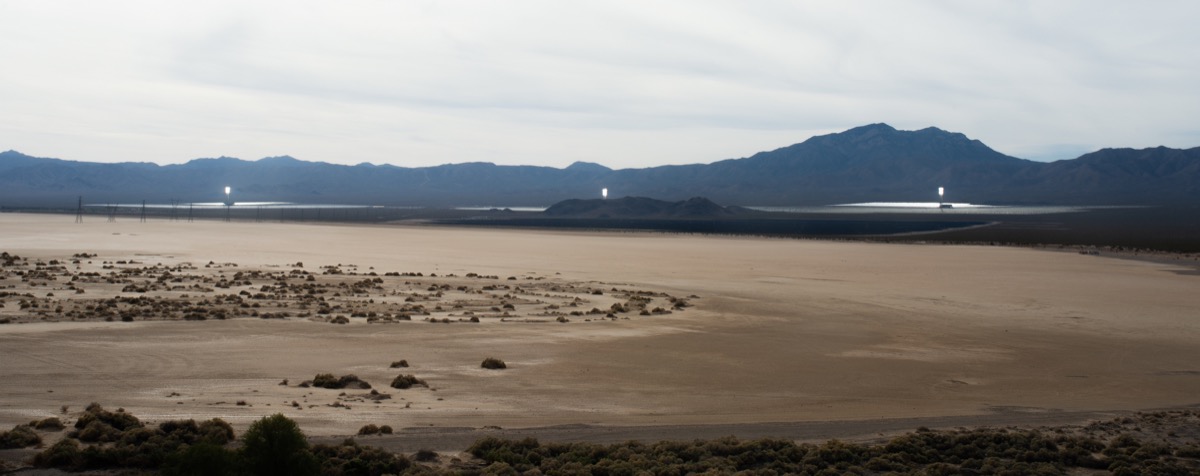
Ivanpah Solar Power Facility sits in a dry lake bed in the Mojave Desert, just west of the Nevada border. Here the foreground is the old dry lake bed; the background is Clark Mountain.
The Ivanpah Solar Power Facility is shocking. If you’re heading from Los Angeles to Las Vegas on I-15, the new sustainable energy plant might give you whiplash as you complete your descent of the graceful desert mountain pass that cuts between Clark Mountain and Kokoweef Peak.
The pass is no more than five miles long in both ascent and descent, but its erosion patterns, loose stones, rough scrub, and playful dance of sky and hill make for satisfying desert drama as you drive east. In the days before modern engines, the little pass was enough to overheat radiators finally exhausted by the long Mojave miles. As energy-related surprises go, Ivanpah is far more welcome: as the last stretch of descent gracefully bends toward the left, the plant’s three boilers and thousands of mirrors peek through the hills and then spread out in the distance: three inexplicable circular mirages of inexplicable white light on an otherwise uniform brown desert floor.
Ivanpah came online in 2014, and it was all-new. It employs no photo-voltaic cells in its daily generation of a max 440 kilowatts of electricity. It’s a solar thermal plant with three circular arrays of thousands of software-controlled, sun-tracking mirrors that direct light and heat into the three 450-foot-tall water-filled boilers. Those boilers heat the water to 550 degrees fahrenheit and create high-temperature steam that turns turbines and generates electricity. Even though it burns a certain amount of natural gas every morning to get the whole system running, it is a smokestack-free source of power for California’s Bay Area, and relatively self-maintaining compared to traditional power plants.
We want to love it. We want it to exist in a promise of harmony with the graceful hillsides, with the sunset colors of evening, with the desert tortoise it displaced from its footprint, with all the mystery of the desert we know in our hearts we’re supposed to leave-the-f%$-alone. But there’s no denying that from a conversationist’s perspective, Ivanpah is a shocking and incongruous thing to sit in a formerly pristine dry lake bed.
Nevertheless, in its stark, extreme, lonesome incongruity it does feel at home in the Mojave. The desert is inexplicable itself, and so it is kind to inexplicable things. It seems to love its ruins of impossible buildings, the crumbling billboards advertising incongruous anachronisms, the artifacts of improbable crops or businesses long expired, all those fading testimonies to human dreams that found harmony of some kind with the desert.
The desert’s lonely judgment is not as kind to the nearby casino oasis of Primm, a kitsch attraction that lies a few miles to the east across the Nevada border. Primm is a freewayside collection of theme hotels, parking garages shaped like storybook castles, and brand-splattered factory outlets, placed where it is for obvious (and highly explicable) reasons. The very existence of Primm is itself a strong enough parry against any environmental and aesthetic objections to a clean power plant nearby.
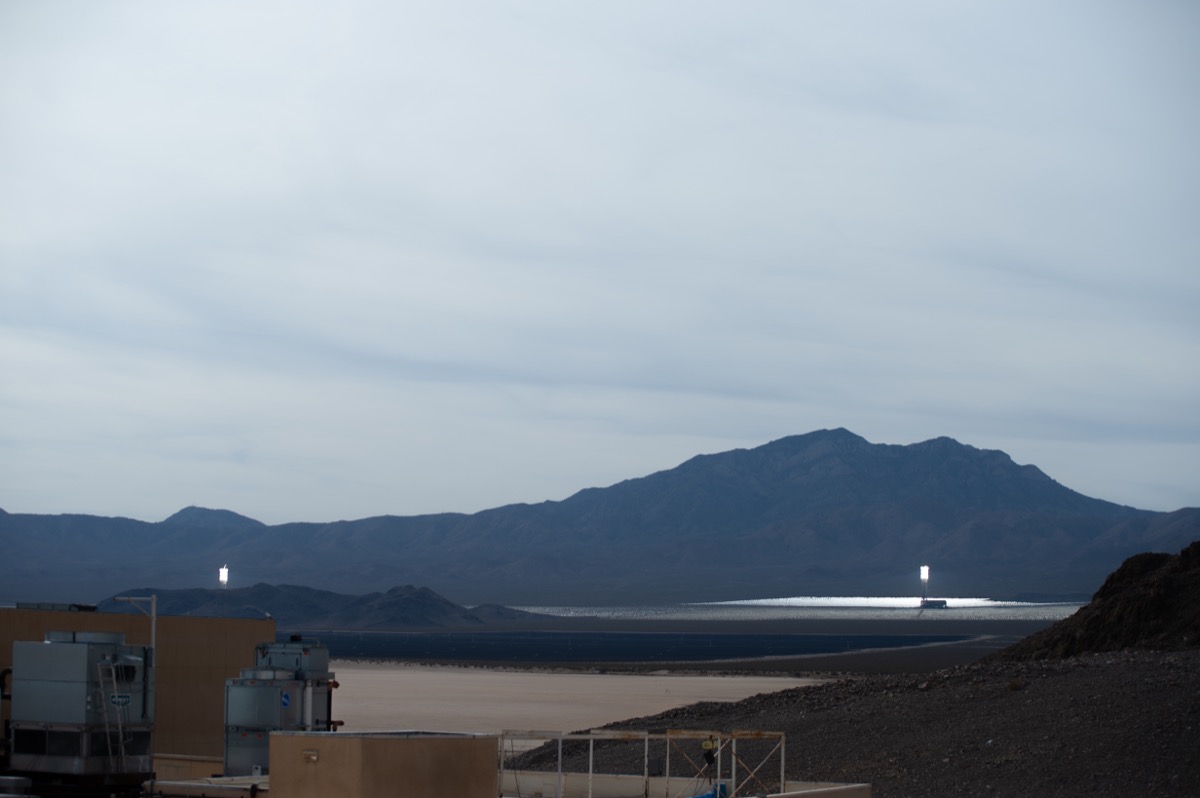
The solar plant complicates the view of Clark Mountain and its neighbors, seen here from a Primm casino rooftop in Nevada. (All images by the author, 2018, except George O’Keefe.)
After all, are we to hold up our clean power plants to a higher standard than everything else we build, including the latest air-conditioned playground for people looking for new ways to part with a few bucks without having to drive the extra 43 miles to Las Vegas?
“People Don’t Realize Deserts Are Important”
Well, yes. Our efforts at improving ourselves do need to avoid environmental hypocrisy. And while Ivanpah’s construction created surprisingly little drama of the Chinatown sort, it has been subject to environmental scrutiny.
As with windmills, the most significant burden of this solar thermal plant seems to be borne by birds. It’s a nightmarish scenario: bugs are drawn to the extraordinary brightness of the sun-mirroring heliostats; those bugs attract birds and bats, which attract larger birds. Some birds are immolated on the sharp features of the mirrors as they chase bugs through the lights. Others, burned by intense radiation between the heliostats and the boilers, are known as “streakers” as they fall to the ground. The numbers of avian victims range from hundreds to tens of thousands annually, and include the Mourning Dove, the pink-throated Anna’s Hummingbird, and the Greater Roadrunner, as chronicled in a fascinating article at the Pulitzer Center, “The Fall of Icaraus: Ivanpah’s Solar Controversy.”
The relationship betwen human beings and the desert is as fascinating as it has been frought with peril. Human attitudes range from Georgia O’Keefe’s loving obsession with the desert landscape, to the hostility we ourselves used to witness in developers and brokers who were part of Las Vegas’ extraordinary expansion in the first decade of this century: evangelists in their desire to tame the unknown and bring it into the comfortable human realm and under human dominion.

Georgia O’Keeffe with Painting in the Desert, N.M., 1960. Tony Vaccaro (American, b. 1922). Chromogenic print; 35.2 x 45.7 cm (13 7/8 x 18 in.). Georgia O’Keeffe Museum, 2007.3.2. Photo: Tony Vaccaro/Tony Vaccaro Studio. Borrowed from this Cleveland Museum of Art article in Medium about Georgia O’Keefe — we’re as obsessed with her as she was with the American desert.
In between these poles are the rest of humanity and a blend of fear and apathy. The desert does not enjoy the uncritical adoration humans lavish on oceans and forests.
As Janine Blaeloch of the Western Lands Project notes in the Pulitzer Center article, “People don’t realize deserts are important.” But the dry lake bed in the desert is nevertheless a gorgeous habitat of both flora and fauna in the Mojave Desert:
Many of the species found in the Mojave are endemic to the region, meaning all members of that species are entirely located within that specific area. Contrary to the typical perception of deserts as barren areas, they are, in fact, biologically rich. Many endangered or threatened species live in these fragile desert ecosystems, including the Yuma Clapper Rail. One threatened species, the desert tortoise, received most of the attention before and during construction of Ivanpah. When construction began, workers expected to find 30 tortoises on site. There were actually over 170. These tortoises were successfully relocated, as part of the largest private study on desert tortoises ever done, and the three companies funded hatching, rearing, and releasing of over 50 tortoises in a dedicated nursery on site. Additionally, special-status plants were transplanted to a designated area also at Ivanpah.
This century will be the story of the deepening of our relationship with every single thing around us — a recognition of how we impact our surroundings and vice-versa. This will be a welcome return to a primary, lost component of our species’ very consciousness, but it will also complicate how we rebuild our part of the world so that we can sustain our presence here.
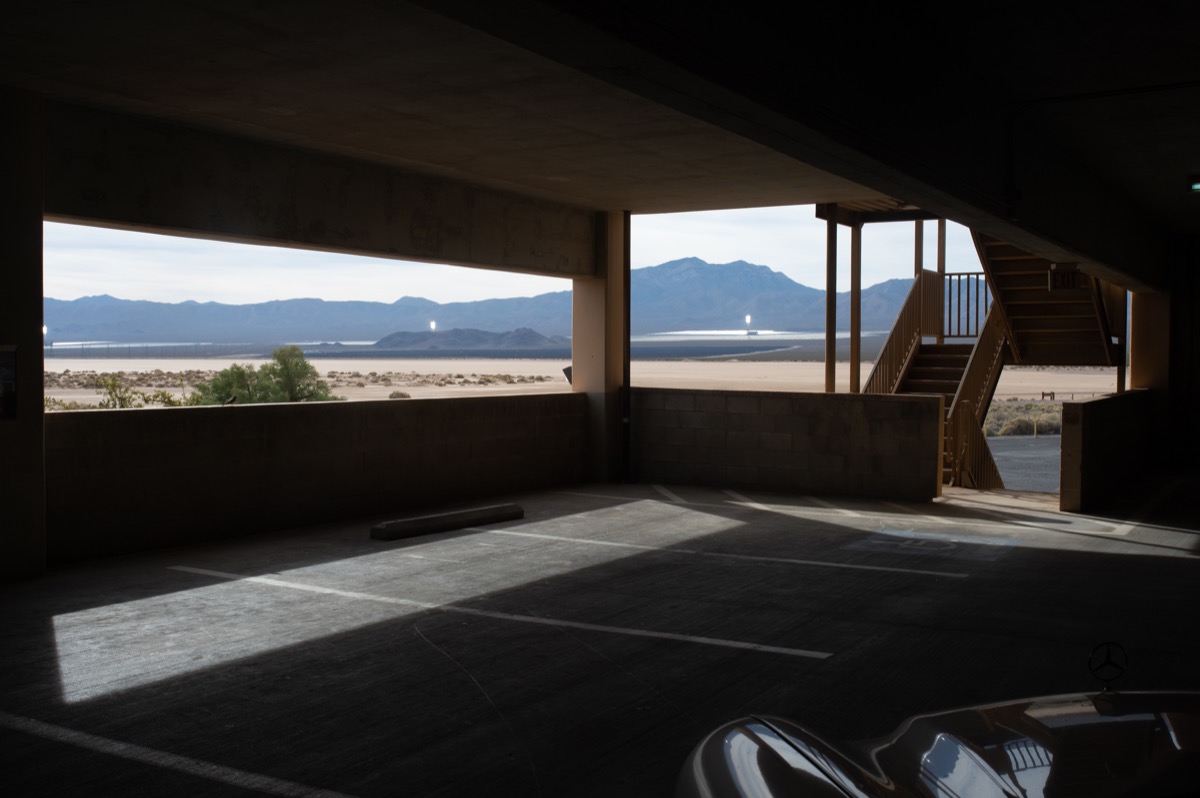
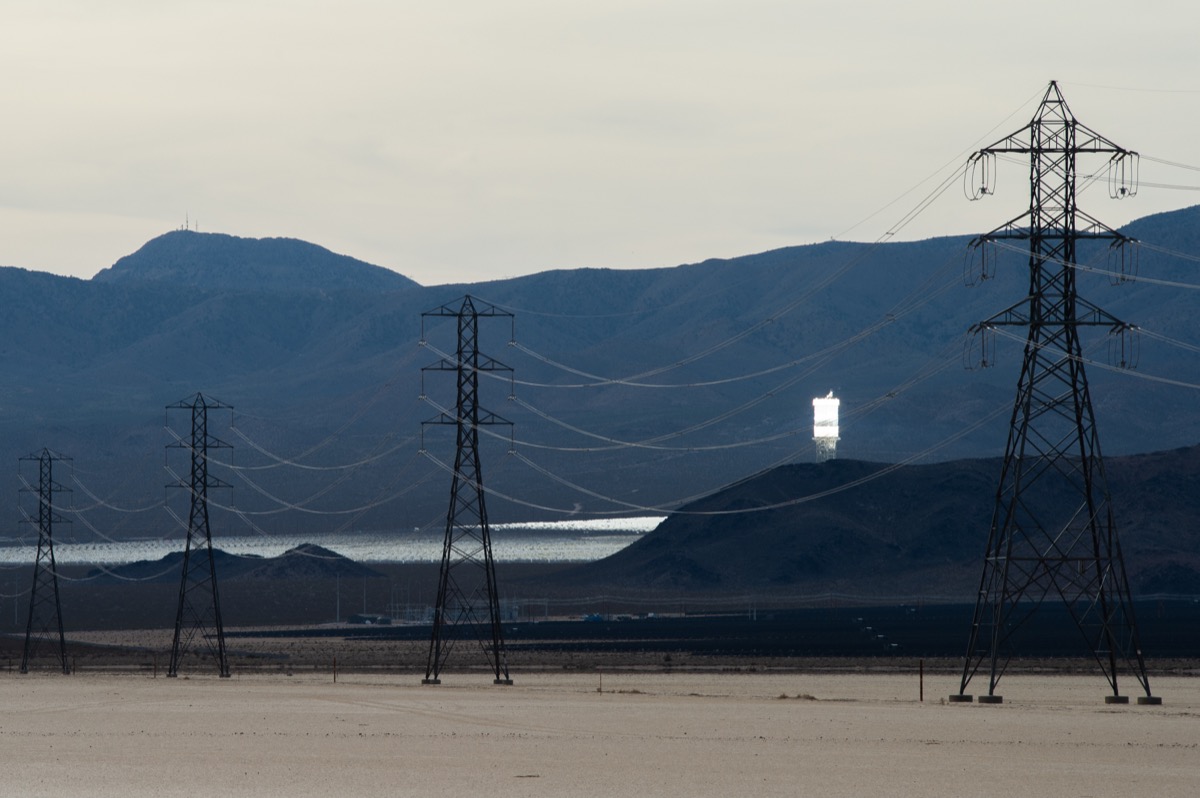
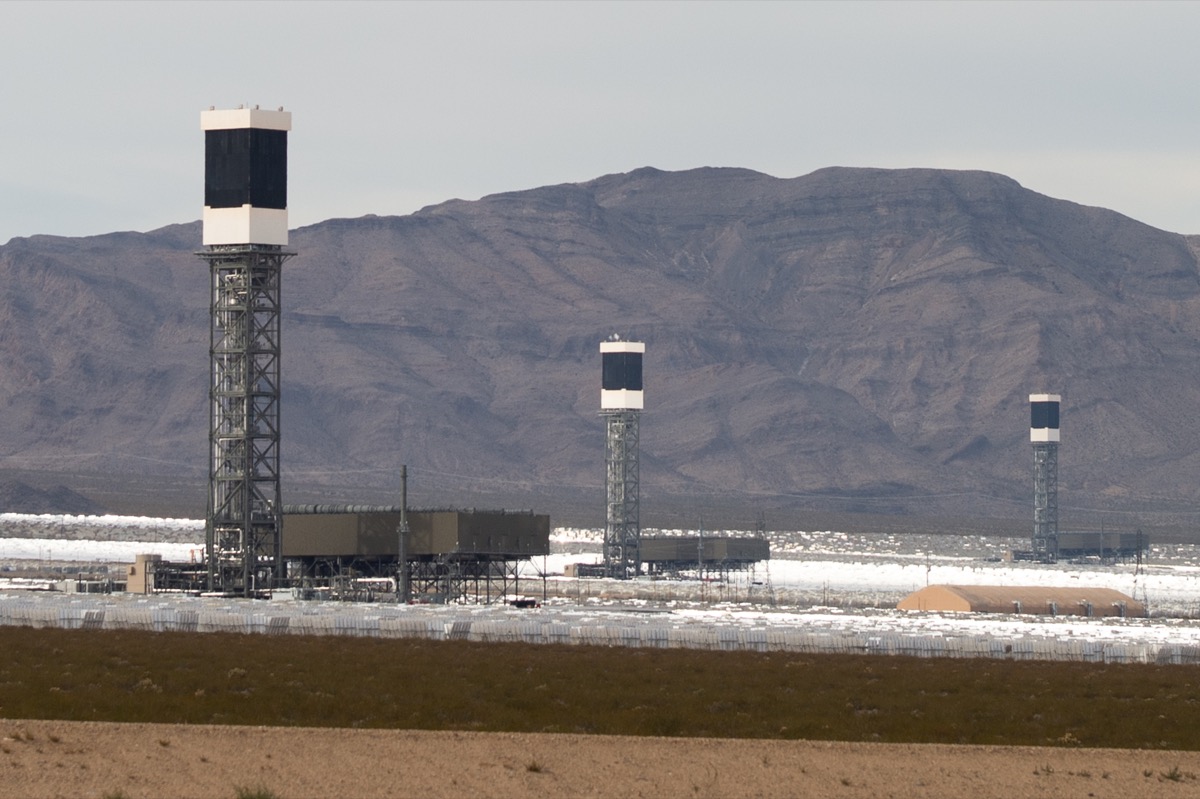
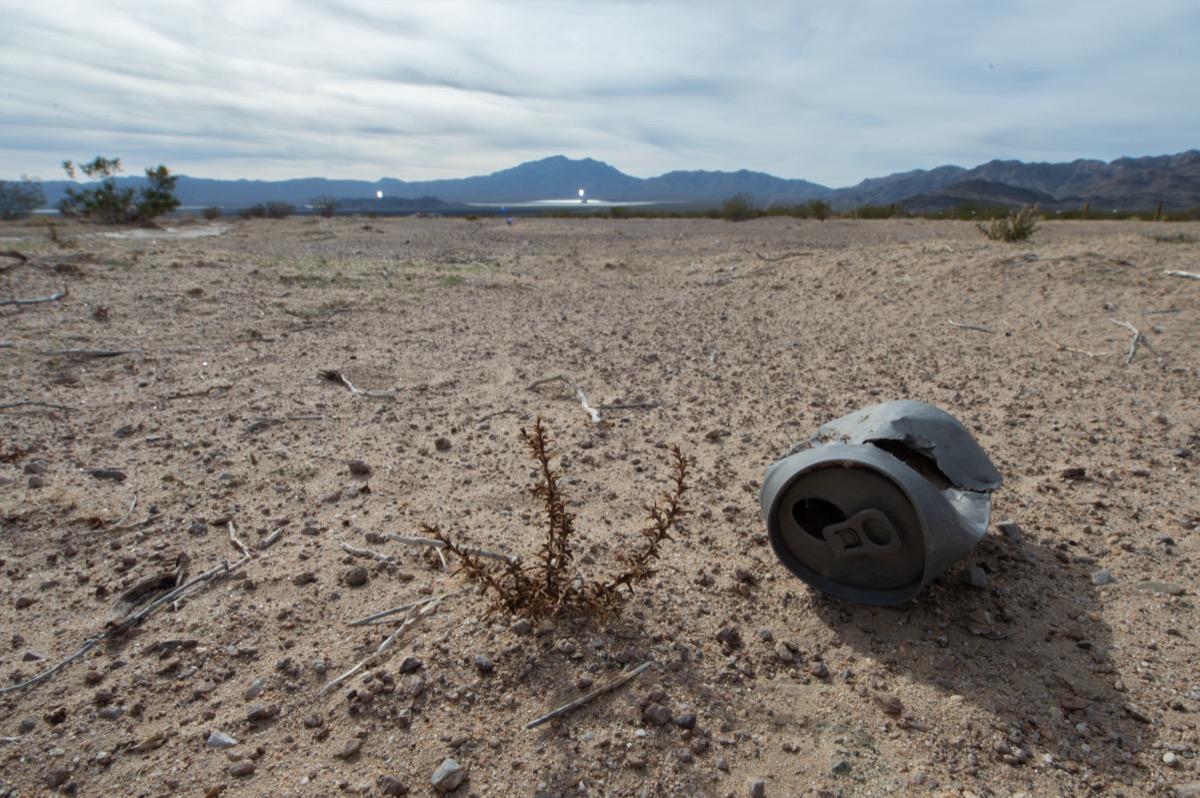
If we know that a solar thermal plant incinerates birds, can we still build it? What if we know an equal number of birds aren’t killed running into equivalent coal smokestacks, or by the acid rain of our coal energy infrastructure?
“Anytime we [do] something new, there’ll be bugs,” explains Doug Davis, compliance officer at NRG, which runs the plant, in the Pulitzer Center article. “There’s a learning curve to this.”
It’s a steep learning curve, but there’s no reason to think it can’t be as graceful as a desert mountain pass where we’re as focused on a long horizon and a safe arrival as anybody keeping their car between the lines on the Mojave Freeway.
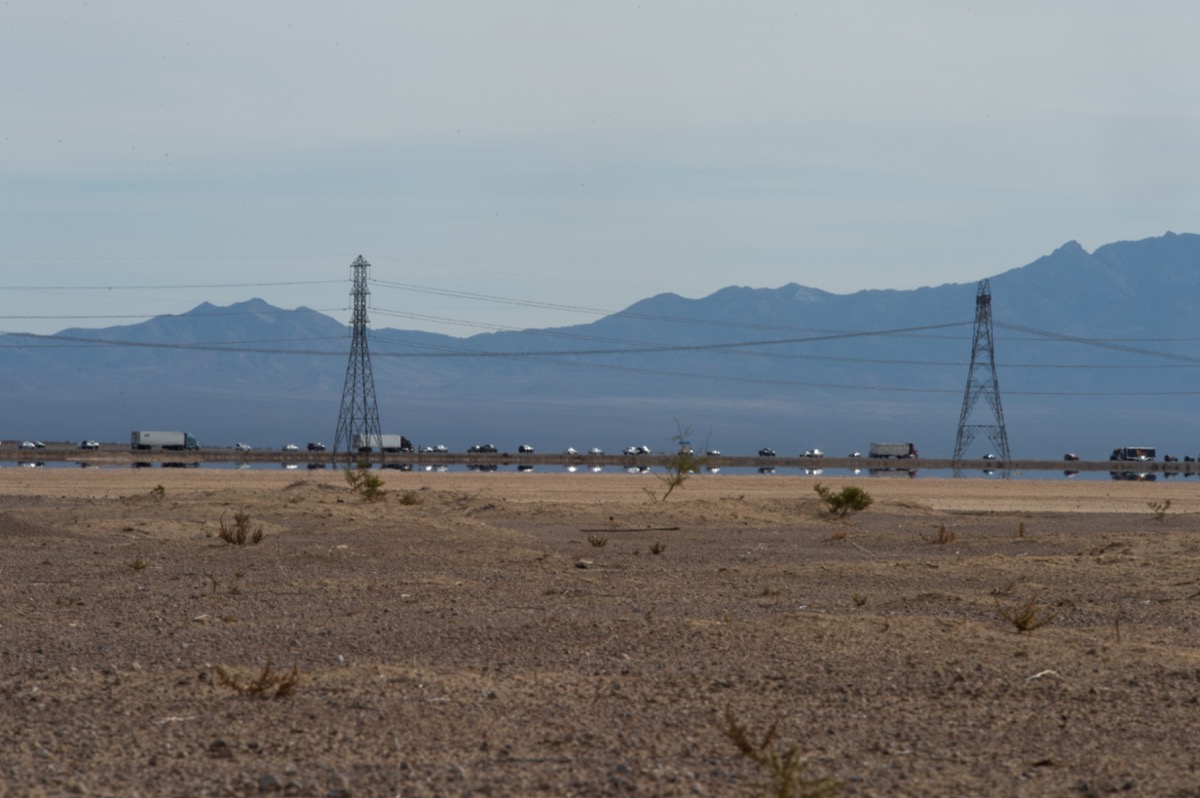
Perhaps we are as inexplicable to the desert as the desert is to us.
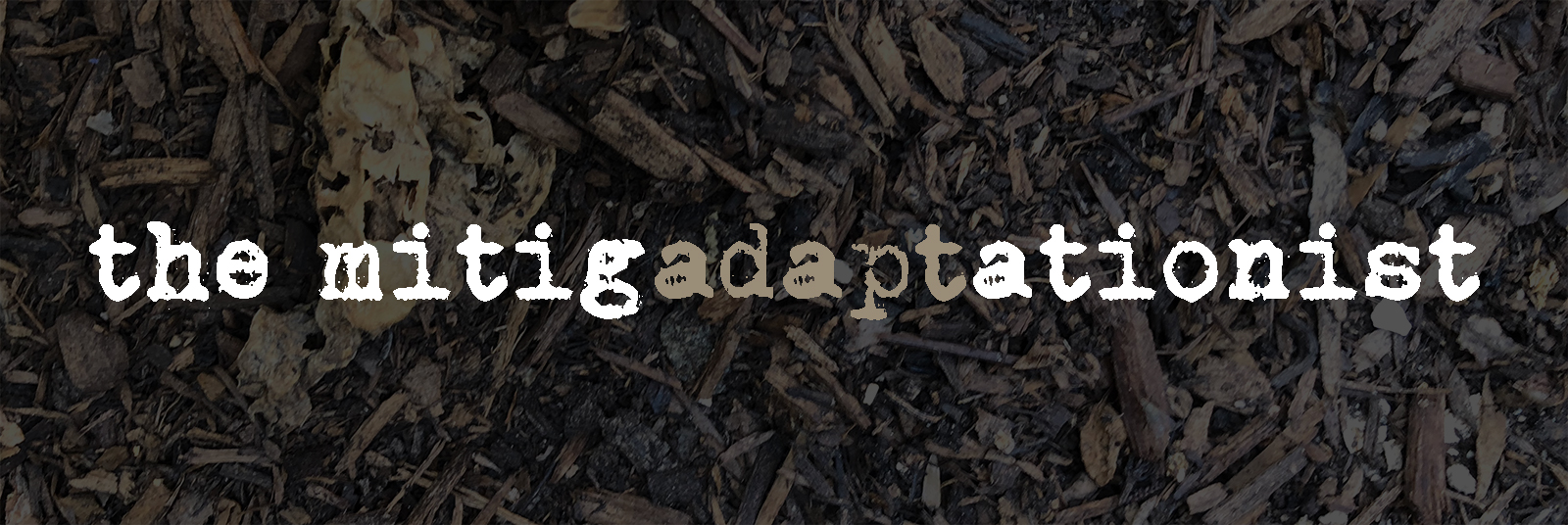
0 Comments
Trackbacks/Pingbacks